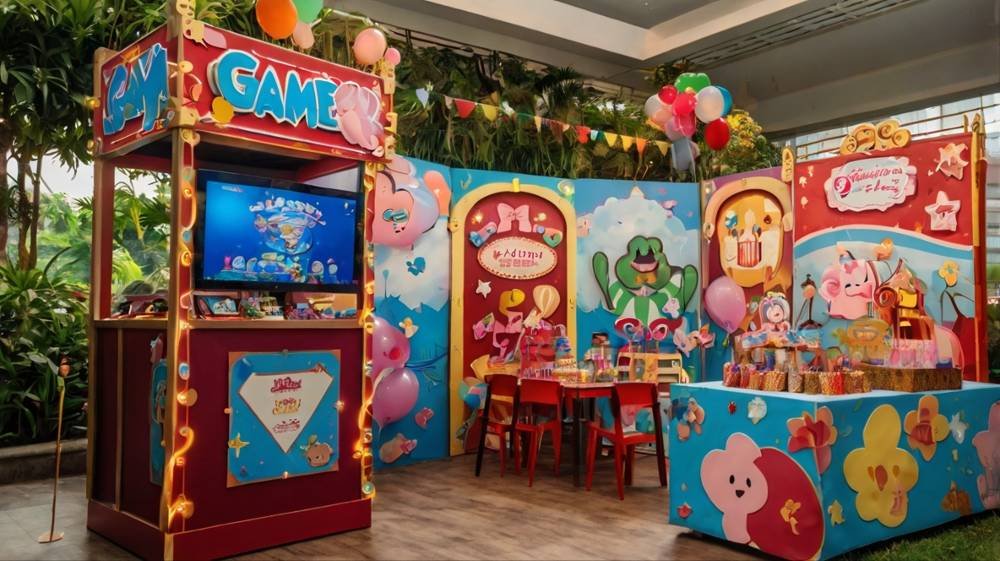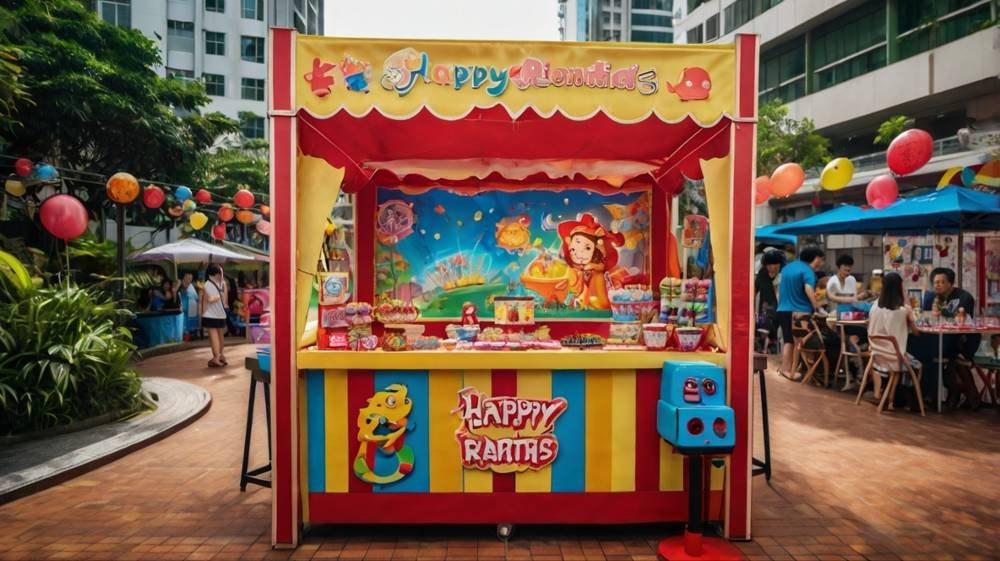How Do You Make a Fun Game Idea?
Coming up with a fun game idea can seem daunting, especially when you’re tasked with entertaining a variety of guests at a birthday party or event. The key to making a game both enjoyable and engaging is to blend creativity, simplicity, and interaction. But how do you make a fun game idea? By focusing on the needs of your audience, considering their ages and interests, and adding a personal touch, you can create an unforgettable experience for everyone involved.
Understanding Your Audience: The First Step to Creating Fun
The foundation of any good game idea starts with understanding who your audience is. Whether you’re designing a game for young children, teenagers, or adults, tailoring the game to your audience’s preferences is essential. For example, kids tend to enjoy games that are physically engaging and easy to understand, such as tag or treasure hunts. On the other hand, older kids or teenagers may prefer team-based games or those with a slight competitive edge.
A 2022 study conducted by the Singapore Children’s Society found that children are more likely to stay engaged when the games align with their interests and developmental stage. This highlights the importance of selecting or designing games that resonate with the target group. Consider what activities the participants are naturally drawn to and build your game concept around that.
Simple Ideas Lead to Big Fun
One of the most common misconceptions about game creation is that it has to be overly complicated to be entertaining. In reality, simplicity is often the key to making a game fun. Games with straightforward rules allow guests to dive right in without the need for lengthy explanations. For instance, variations on classic games like musical chairs or relay races can be just as exciting when you introduce a new twist, like a themed prop or setting.

A case study showed that participants enjoyed simple games more when there was a creative or humorous twist involved, such as replacing chairs in musical chairs with themed cushions or involving props that align with the event’s theme. Keeping the rules easy to follow allows for more spontaneity and enjoyment, especially when your audience is diverse in age or experience.
The Power of Themes in Game Ideas
Adding a theme to your game idea is one of the simplest ways to make it more engaging and memorable. Whether it’s a superhero-themed obstacle course or a pirate treasure hunt, themed games help bring your event’s atmosphere to life. Themes not only make the game more immersive but also provide context that enhances the fun factor. For instance, a “jungle explorer” theme can include games where kids must “swing” across a pretend river or “escape” from wild animals using props and creative setups.
Themes give the game a narrative, encouraging participants to invest in the experience emotionally and physically. A themed game also allows for creativity in terms of costumes, props, and prizes, making the experience richer and more exciting for the players. In a 2023 survey, 76% of participants said that games with strong, immersive themes left a lasting impression compared to non-themed events.
Incorporating Physical Activity
Physical activity is a fantastic way to add excitement to any game. Whether you’re hosting a children’s birthday party or a corporate event, games that encourage movement keep participants energized and engaged. Think about activities like scavenger hunts, relay races, or even simple tag-based games that get people up and moving. When physical activity is involved, guests are more likely to bond, have fun, and stay interested.
For younger kids, obstacle courses that challenge their agility, balance, and speed are always crowd-pleasers. For adults, team-based physical games—such as relay races with a twist or light-hearted competitions—can break the ice and create a relaxed, fun atmosphere. According to the Singapore Institute of Health, events that incorporate physical games also benefit participants’ mood and energy levels, making the event more enjoyable overall.
Balancing Competition and Cooperation
Fun game ideas often strike a balance between competition and cooperation. Competitive games, when designed well, can encourage friendly rivalry without becoming too intense. Games like capture the flag, relay races, or trivia contests with team elements encourage participants to collaborate while still engaging in a bit of competition. The key is to ensure that the competition remains light-hearted and fun, and to provide opportunities for everyone to shine.
Cooperative games, on the other hand, promote teamwork and ensure that no one feels left out. Games that require guests to work together to solve puzzles, complete tasks, or achieve a shared goal foster camaraderie and connection. For instance, a cooperative treasure hunt where teams work together to follow clues and unlock a “prize” builds excitement without the pressure of individual performance.
The Role of Rewards: Motivating Participation
While the ultimate goal of playing a game should be fun, adding a reward system can heighten the excitement. Whether it’s small prizes for kids or more creative rewards like certificates or themed souvenirs for adults, prizes motivate guests to engage in the game. Rewards also give participants a sense of accomplishment and add an extra layer of enjoyment to the experience.
Consider offering tiered prizes to increase motivation—this allows participants of all skill levels to feel included and appreciated. For example, in a carnival setting, games can have small rewards for participation and larger prizes for winners. A study conducted by Singapore Fun Events in 2022 found that 85% of participants were more likely to take part in games when a tangible reward was involved, even if it was something small.
Incorporating Technology: A Modern Twist on Game Ideas
Incorporating technology into game ideas opens up new possibilities for fun and interaction. From interactive touch screens to augmented reality games, tech-based activities offer a modern twist that appeals to all ages. For example, games that involve QR codes, digital scavenger hunts, or virtual escape rooms can be seamlessly integrated into both indoor and outdoor events.
A case study from the Singapore Digital Innovation Center in 2023 revealed that tech-driven games increased participation by 30%, particularly among younger guests who are more attuned to digital experiences. Integrating technology into traditional games, such as using a smartphone app to track scores or guide participants through challenges, can make the event feel more innovative and exciting.
Customizing Games to Fit Your Event
Customizing your game idea to fit the event theme, location, and guest preferences ensures that your game is fun for everyone. If you’re hosting an outdoor event, games that take advantage of the natural environment—like a water balloon toss or sack race—are perfect. If you’re indoors, consider setting up stations with different activities, allowing guests to rotate between games.
For corporate events, customizing the game to reflect the company’s values or goals can enhance team-building. For example, a trivia game based on company history or achievements could be a fun way to engage employees while reinforcing brand culture. Personalizing the game not only enhances engagement but also ensures it feels relevant and unique to the occasion.
Case Studies: Game Ideas That Worked in Singapore
In Singapore, unique and interactive games have been successful across various events. In 2022, a corporate family day organized by Fun Time Events featured a mix of physical and digital games, including a scavenger hunt with QR codes leading to different stations. The game was a hit among both children and adults, as it blended technology with traditional elements, encouraging guests to interact with one another.
Another successful example was seen at a school carnival in 2023, where educators set up a science-themed game booth that challenged students to solve puzzles related to physics concepts. Not only was the booth a favorite among students, but it also reinforced learning in a fun and engaging way. These case studies highlight how integrating creativity and customization can transform simple games into unforgettable experiences.
Conclusion: Unleashing Your Creativity
The key to making a fun game idea lies in understanding your audience, keeping the rules simple, and adding creative elements that enhance engagement. By incorporating themes, physical activity, and technology, you can elevate any game from ordinary to extraordinary. Whether you’re planning a small birthday party or a large-scale corporate event, fun game ideas that balance interaction, competition, and cooperation will leave a lasting impression on your guests.
For more inspiration on making your event unforgettable with exciting game ideas, visit PartyAllo. Explore their wide range of fun and engaging Games Booth options for your next event.
Click on the link to find out more about PartyAllo. Chat with our sales representatives today!
About PartyAllo
Party Packages
Mascot Rental
Carnival Game Booth
Whatsapp Us

